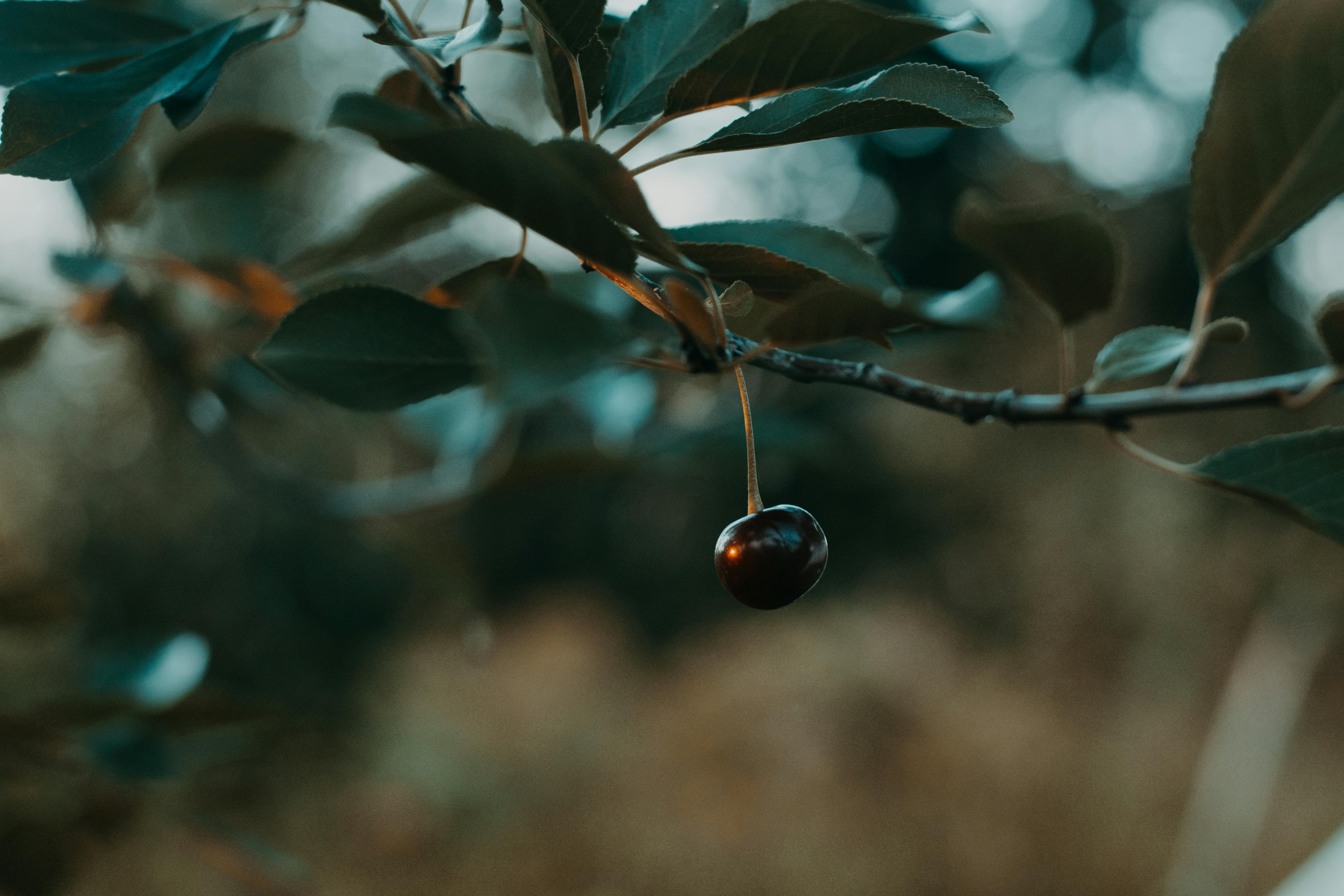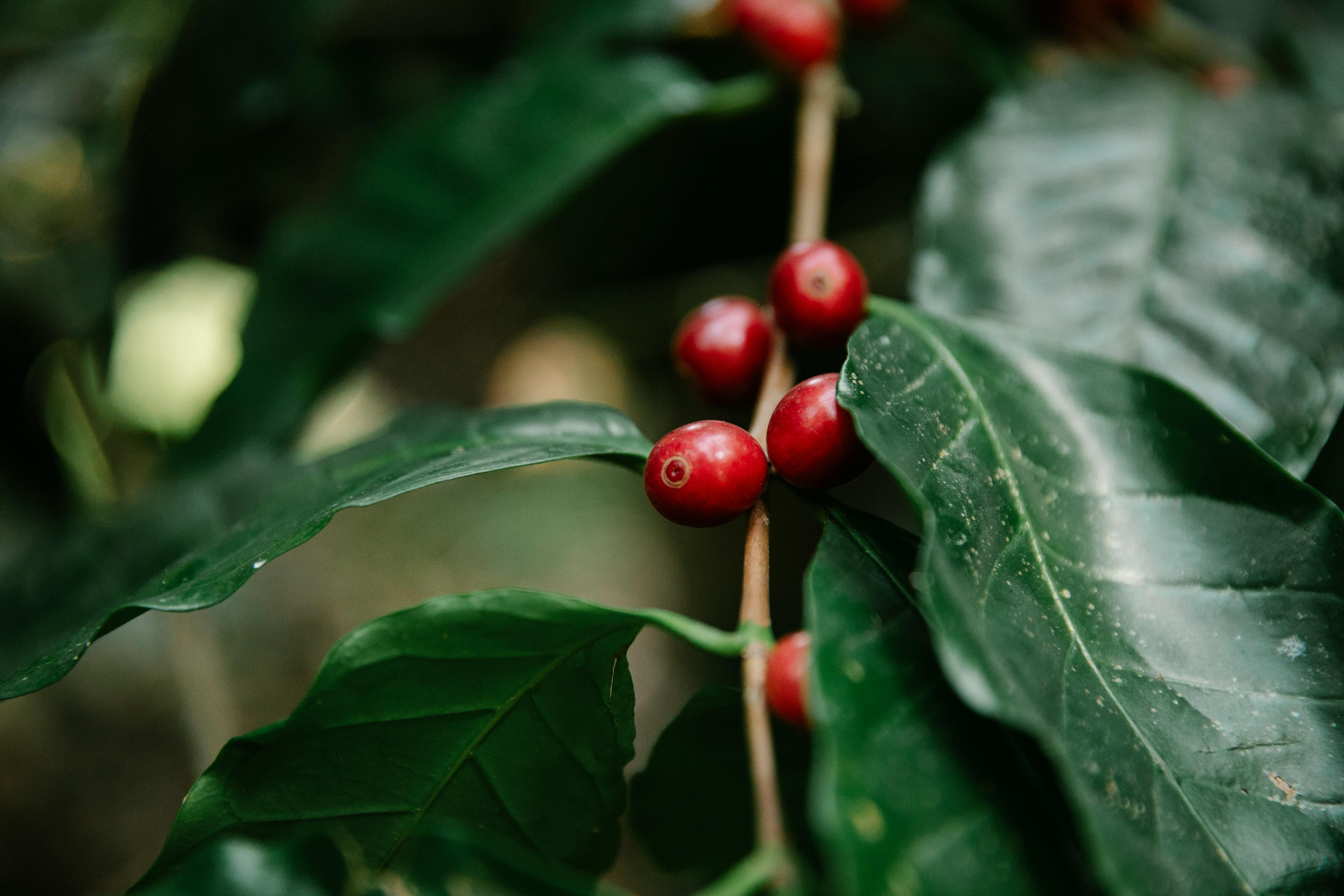Cherry trees are a popular fruit tree in many parts of the world due to their delicious and colorful fruit. One of the most common questions asked about cherry trees is whether or not they produce fruit every year. In this article, we will answer this question and explore other topics related to cherry tree fruits.A cherry tree is a type of tree that is known for producing the sweet and tart fruit of the same name. It is a deciduous tree and typically grows to be about 30 feet in height. Cherry trees are widely cultivated around the world, with varieties varying in size, shape, color, and flavor. The blossoms of a cherry tree are usually pink or white in color and appear early in spring before leaves emerge. The fruit that follows ripens over the course of several weeks in summer and can be eaten fresh or used to make pies, jams, jellies, wines, cordials, and other foods.
Can Cherry Trees Fruit Every Year?
Yes, cherry trees can fruit every year. A cherry tree will generally produce fruit for 15-20 years, although some varieties can last up to 30 years. The tree will need to be in the right environment and cared for properly for it to produce fruit each year.
In order to ensure your cherry tree produces fruit each year, you’ll need to provide it with enough sunlight, water, and nutrient-rich soil. The tree should also be pruned regularly. Pruning helps maintain the shape of the tree and encourages new growth. Additionally, cherry trees benefit from regular fertilization in order to keep them healthy and productive.
Cherry trees will usually flower during the springtime, when temperatures are warm enough for the blossoms to open up and attract pollinators such as bees and other insects. After pollination has occurred, the flowers will eventually develop into cherries that can be harvested when they are fully ripe.
If your cherry tree is not producing fruit each year, then it may be a sign that something is wrong with your tree or its environment. Common issues can include lack of sunlight or water, nutrient deficiencies in the soil, or pests and diseases that are affecting the health of your tree. If you encounter any of these issues, then it’s best to contact a professional arborist who can help diagnose and treat the problem so that your cherry tree can continue producing healthy fruits each year.
Overall, cherry trees can produce fruits every year if they are provided with proper care and a suitable environment for growth. With enough sunlight, water, nutrients, and regular pruning and fertilization; your cherry tree should be able to bear fruitful harvests annually!
What Affects Cherry Tree Fruiting?
The production of fruit by cherry trees is affected by a number of factors. These include climate, soil composition, water availability, pollination, and pest infestation. Each one of these factors can influence the amount of fruit the tree produces.
Climate is one of the most important factors influencing cherry tree fruiting. The ideal climate for cherry trees is one with relatively mild winters and warm, sunny summers. If temperatures during the winter are too cold, it can damage the flowers and prevent them from forming fruit. If temperatures during the summer are too hot, it can cause the flowers to drop off before they have time to form fruit.
Soil composition is also important for cherry tree fruiting. The soil needs to be rich in organic matter and have a slightly acidic pH level in order to provide optimal nutrition for the tree to produce fruit. If the soil does not contain enough nutrients or if it is too alkaline or acidic, this can cause nutrient deficiencies that reduce fruiting potential.
Water availability also affects cherry tree fruiting. While cherries need plenty of water during their growing season in order to form healthy fruits, they can easily become over-watered if there is too much rain or irrigation during this time. Too much water can cause diseases that inhibit fruiting or cause flowers to drop prematurely before they have time to form fruit.
Pollination is another factor that affects cherry tree fruiting. Pollination occurs when bees transfer pollen from male flowers to female flowers so that they can form fruits and seeds. Without adequate pollination from bee activity, there may not be enough pollen transfer for sufficient amounts of fruit formation.
Finally, pest infestation can also affect cherry tree fruiting potential due to damage caused by insects or fungi on the flower buds or young fruits as they develop on the tree branches. If these pests are left untreated, they can significantly reduce yields from year-to-year and even prevent successful harvest altogether.
Overall, all of these factors play an important role in determining how much fruit a cherry tree will produce each year. By understanding what affects cherry tree fruiting and taking steps to mitigate any potential issues related to each factor, growers can maximize their yields and enjoy a bountiful harvest each season!
Beautiful Blooms
Cherry trees are renowned for their beautiful and vibrant blooms in the spring. The delicate flowers, which usually range in color from white to pink, are a sight to behold when in full bloom. The flowers are often highly fragrant, providing an enjoyable aroma to be enjoyed while admiring them. In some cases, cherry trees will even put on a stunning display of fall foliage as the temperatures cool down.
Fruit Production
In addition to providing beauty and scent throughout the year, cherry trees can also produce delicious fruit. Most varieties provide an abundance of sweet cherries that can be eaten fresh or used for baking or preserving. These fruits can also be dried and stored for long-term use. Some cherry tree varieties may even be used to make wines and liquors.
Easy Maintenance
Cherry trees are relatively easy to maintain and do not require much pruning or care once established. They do best in moist, well-drained soil with full sun exposure, but can tolerate partial shade as well. They will generally thrive without any additional fertilization, but it may help boost fruit production if desired.
Attract Wildlife
Cherry trees attract many species of birds and other wildlife due to their fruit production. Various types of birds such as cardinals, blue jays, robins, cedar waxwings, and woodpeckers all enjoy feasting on cherry tree fruits during various times of the year. Other creatures such as squirrels and raccoons may also be attracted to the delicious fruit provided by the cherry tree.
Overall, cherry trees provide beauty with their blooms and fragrance throughout the year along with delicious fruits for human consumption or wildlife consumption. They require minimal maintenance once established and are a great addition to any landscape or garden setting.
Lifespan of a Cherry Tree
Cherry trees have a lifespan of about 25 to 30 years. Some varieties, however, can live longer than that. The type of cherry tree, the climate in which it is grown, and the care it receives will all play a role in how long the tree will live.
In colder climates, cherry trees may not live as long as they do in warmer climates due to freezing temperatures and other environmental factors. Trees that are well cared for with proper pruning and fertilization may also be able to extend their lifespan beyond that of an average cherry tree.
Cherry trees begin to produce fruit within three to four years after planting. However, they generally don’t reach their full production until seven or eight years after planting. After this point, the production will slowly decline over the remaining lifespan of the tree.
It is important to remember that a cherry tree’s lifespan is not fixed; some trees may die prematurely due to disease or environmental factors while others may live much longer than expected given proper care and maintenance.

Preparing the Soil
Before planting a cherry tree, it is important to prepare the soil for optimal growth. This can be done by mixing organic matter such as compost and peat moss into the soil. This will help to improve drainage, increase fertility, and provide nutrients for the tree. Additionally, it is also important to ensure that the soil pH is between 6.0 and 7.0; if it is too low, lime or wood ash can be added to raise it.
Planting
Cherry trees should be planted in early spring or late winter when they are dormant. It is important to dig a large enough hole so that the roots of the tree have plenty of room to spread out in all directions. Additionally, before planting, prune away any dead or damaged branches. Once planted, water thoroughly and mulch around the base of the tree to help keep moisture in and discourage weed growth.
Watering
Cherry trees require regular watering during their first year after planting; they should be watered a few times per week depending on weather conditions. After this, they should only need supplemental watering during dry periods or extreme heat waves. Watering should be done slowly and deeply at the base of the tree; avoid wetting foliage as this can lead to fungal diseases such as powdery mildew or leaf spot diseases.
Fertilizing
Fertilizing cherry trees once per year with a balanced fertilizer will help promote healthy growth and abundant fruit production. The best time to fertilize is in late winter or early spring before bud break; use an organic fertilizer such as fish emulsion or compost tea for best results. Avoid over-fertilizing as this can lead to excessive vegetative growth at the expense of fruit production.
Pruning
Pruning cherry trees helps encourage proper shape and size while also allowing for maximum light exposure and air circulation throughout the canopy; this helps prevent fungal diseases from developing on leaves and fruits. Prune away dead or damaged branches anytime throughout the year; pruning for shape should be done in late winter while cherries are still dormant .
Common Diseases of Cherry Trees
Cherry trees are a common sight in many parts of the world, and they can be beautiful additions to any landscape. However, cherry trees are susceptible to a number of diseases, which can affect the health and beauty of the tree. The most common diseases of cherry trees include brown rot, bacterial canker, powdery mildew, root rot and leaf spot.
Brown Rot
Brown rot is a fungal disease that affects both sweet and sour cherry trees. The fungus attacks both the fruit and the twigs of the tree. Symptoms include dark brown spots on the fruit and twigs that become dry and brittle. The fungus can spread quickly throughout a tree if not treated immediately. To control brown rot, remove infected fruit from the tree as soon as possible and apply fungicides to affected branches.
Bacterial Canker
Bacterial canker is a serious disease that affects all types of cherry trees. It is caused by a bacterium called Pseudomonas syringae pv syringae. Symptoms include wilting, leaf discoloration, dead twigs and young shoots that are killed off at their tips. Control measures for bacterial canker include removing affected branches from the tree and applying an antibiotic-based fungicide to remaining branches as soon as symptoms appear.
Powdery Mildew
Powdery mildew is another fungal disease that affects cherry trees. It appears as white or gray patches on leaves, stems and fruit surfaces. Infected leaves may curl or become distorted in shape as well as discolor before dropping off prematurely. To control powdery mildew, reduce moisture levels around plants by spacing out plants properly in order to increase air circulation around them; prune back branches to thin dense areas; water plants early in the morning so that foliage has time to dry out during the day; and apply fungicides such as sulfur or neem oil once symptoms appear on foliage or fruit surfaces.
Root Rot
Root rot is caused by several species of fungi including Phytophthora spp., Fusarium spp., Pythium spp., Armillaria spp., Rhizoctonia spp., Sclerotinia spp., Verticillium spp., Cylindrocarpon spp., Cylindrocladium spp., Ceratocystis spp., Thielaviopsis paradoxa, Trichoderma viride and Sclerotium rolfsii. Symptoms include yellowing leaves; wilting; stunted growth; root discoloration; root lesions on roots; death of fine feeder roots; poor growth with stunted shoots; death of roots or entire plants in extreme cases; fruiting bodies growing on dead wood near base of trunk; decline in vigor over several years with plant eventually dying off if left untreated for too long; girdling roots where new growth beyond point of girdling fails to form due to lack of nutrient uptake beyond affected area; reduced leaf size due to lack of nutrient uptake beyond affected area; stem cankers (particularly Phytophthora); bark lesions (particularly Phytophthora); swollen roots (particularly Fusarium); crown gall (particularly Agrobacterium). Control measures for root rot involve improving soil drainage by aerating soil with compost or other organic material such as straw or hay mulch prior to planting cherries in order to reduce waterlogging around plant roots which encourages fungus growth; removing infected plants from soil immediately since root rot pathogens spread easily among plants when infected material comes into contact with healthy plant tissue through water droplets splashing from one plant onto another during rain events or overhead irrigation/watering activities; applying copper-based fungicides when symptoms appear in order to prevent further spread into healthy tissues throughout plant since copper-based fungicides inhibit spore germination/growth when applied at correct concentrations/doses for particular species involved in infection process (consult local county extension office for specific recommendations regarding this matter).
Leaf Spot
Leaf spot is caused by several species of fungi including Colletotrichum gloeosporioides, Alternaria alternata and Marssonina coronariae which attack both sweet cherries (Prunus avium) as well as sour cherries (Prunus cerasus). Symptoms include small spots appearing initially on upper surface side of leaves which later coalesce together forming larger spots along margin edges eventually leading up towards leaf midribs where spots appear reddish-brown/blackish-brown surrounded by yellow halo effect at this stage before entire leaf drops off from plant prematurely due to infection process taking place within leaf tissue itself at this point leading up towards eventual death if left untreated for too long period time frame wise – control measures involve application copper-based fungicides when symptoms appear order prevent further spread into healthy tissues throughout plant since copper-based fungicides inhibit spore germination/growth when applied correctly concentrations/doses particular species involved infection process (consult local county extension office specific recommendations regarding matter).
Pruning a Cherry Tree
Pruning a cherry tree can be a tricky task. It is important to understand the basics of pruning and when the best time to prune is. Pruning a cherry tree should be done during late winter or early spring before the tree begins to bud. This will allow for better air circulation and light penetration into the tree’s canopy. When pruning your cherry tree, you should remove any dead, diseased, or damaged branches first and then reduce overcrowding by removing any non-fruiting branches. You should also remove any branches that are too close together, as this can lead to excessive competition for resources such as water and nutrients. Finally, you should thin out the canopy of your cherry tree by removing smaller branches that are not producing fruit. Pruning your cherry tree regularly will help ensure it stays healthy and productive for many years.
It is important to remember that pruning is not just about removing excess branches; it is also about shaping the overall structure of the tree. When shaping your cherry tree, you should strive to create an open-center structure with evenly spaced scaffold branches. This will allow for better air circulation and light penetration into the canopy of your cherry tree, which is essential for good fruit production. Pruning your cherry tree on an annual basis will help keep its shape and ensure it remains healthy and productive for many years to come.

Conclusion
In conclusion, cherry trees are a great addition to any garden or landscape. They come in many varieties and sizes, and they produce delicious fruit that can be enjoyed for years to come. Most cherry trees will produce fruit every year, though some may require additional care or pruning in order to ensure consistent yields. Taking the time to properly care for your cherry tree will ensure that you reap the benefits of its harvests for many years.
Cherry trees are an excellent choice for those looking to add a touch of beauty and productivity to their gardens and landscapes. With proper care and maintenance, these trees can provide years of delicious fruit and enjoyment.



